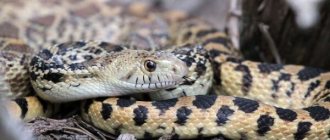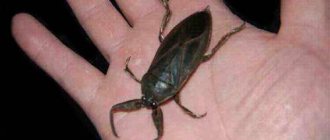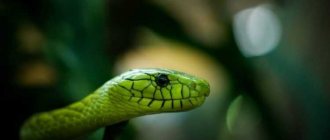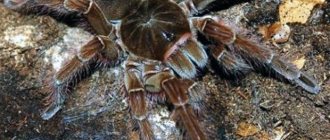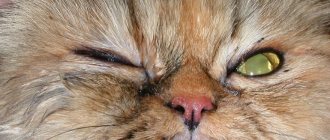- Lifespan
It is not without reason that we chose this title for an article about snakes, which, although they belong to the far from most pleasant class of reptiles - snakes, are nevertheless among all snakes the most friendly to people. This is evidenced by the fact that, for example, our ancestors, the ancient Slavs, revered the snake as a sacred animal, and many rural houses even had their own pet snakes, for which the villagers carefully left bowls of milk. In gratitude for this, snakes caught mice and rats in rural barns, and provided essentially the same benefits to the household as household
cat.
Description, structure, characteristics
What does it look like? The size of snakes can range from small snakes from 15 cm in length to quite large snakes with a length of more than 3.5 m. Moreover, interestingly, female snakes are always noticeably larger than males.
The head of the snake is small and in some of their species it is protected by symmetrically located and paired scutes. The body of this snake is slender and covered with scales, and in some species it is smooth, while in others it has longitudinal ribs. The snake's eyes, as well as its pupils, are round in shape.
The snake's tail is 3-5 times shorter than the entire body. In addition, it can have a different shape: rounded, sharp or steep.
But a snake’s teeth greatly depend on its species; in different snakes they can vary greatly in number, shape and size. In general, in most snakes they are sharp, small and motionless. But in addition to this, zoologists have discovered in some snakes smooth, articulated teeth, which tend to bend when eating hard food. Also in the mouth, in addition to teeth, there is also a forked tongue.
Keeping a common grass snake in a terrarium
In captivity, snakes quickly get used to human hands, stop making attempts to bite, and secrete protective fluid.
Arrangement of the terrarium
An ordinary grass snake can be kept in a horizontal terrarium, the minimum size of which should be 50x40x40 cm, but larger is better. To prevent the snake from escaping, the top of the terrarium is covered with a net.
A mandatory attribute in a terrarium for a snake is a pool in which the pet can swim.
In the warmest corner of the terrarium, the temperature should be 30-33°C during the day and 20-23°C at night. The desired temperature is maintained by a lamp, thermal cord or thermal mat.
Coconut substrate, gravel, coarse sand, sphagnum moss or just paper are used as bedding. Humidity must be maintained at a high level, which is achieved by regularly spraying the soil with a spray bottle. The snake is a diurnal snake, so the lighting should be bright enough (fluorescent or LED lamps). Be sure to place shelters (for example, pieces of bark) in warm and cold corners.
Plants will create additional shelter, but you need to keep in mind that most snakes quickly break and spoil the plants of the terrarium, so it is better to decorate the snake’s home with branches, snags, etc. And plants can only be placed in ampelous forms, fixed at the top of the terrarium and hanging down. Or use tough plants - monstera, aspidistra, sansevieria, bromeliads, etc.
Communication with a snake
When communicating with this pet, hand movements should be leisurely and smooth. Sharp, quick gestures should not be allowed; the snake responds to such movements with a throw.
If you need to take a calmly lying snake, the hand should smoothly approach it from behind, along the back to the head. You need to take it by the neck, behind the head. The grip should be precise, tenacious, but not tight: by squeezing the reptile too tightly, we prevent it from breathing. With your other hand you need to grab the pet’s body close to the tail. Keep in mind that only non-venomous snakes can be taken this way.
What to feed the snake?
The snakes are fed frogs, toads, and baby mice, and the food must be live. Some people believe that a snake can be trained to eat raw meat. Many snakes, especially hungry ones, can sometimes show interest in meat, crawl up to it, feel it with their tongue, but do not eat it. After all, snakes are specialized in hunting moving prey.
So, I already got the frog and ate it. When should I feed him again now? The pet will tell you about this through its behavior. A well-fed pet lies and digests food. When hungry, it begins to restlessly crawl around the terrarium and feel everything with its tongue. This can occur either 3 days after feeding, or after 1-2 weeks, and even after a month. It all depends on the condition of the reptile, the conditions in the terrarium, and the amount of food eaten previously. In winter, snakes eat less often. But sometimes the snake may completely refuse to eat. If this has not been observed in your pet before and he ate well in the terrarium, then there are 2 reasons why he refuses food:
- is already sick or so weak that he has no time to eat;
- He is already healthy, well-fed, but physiologically needs some rest for some time, does not want to eat.
Of course, the second case should not be a cause for concern. But how can one determine the health and fatness of a snake? So, a healthy snake has clean nostrils and eyes, a pink mouth, a mobile and fast tongue, and appears during periods of excitement. When molting, a healthy reptile leaves an almost untorn film of skin - crawling. A sick snake sheds in patches (snakes can also shed if there is a lack of moisture).
The fatness of a snake can be determined externally and by touch: the reptile should be round, the vertebrae should not protrude, it is difficult to feel with a finger.
Severely emaciated and sick animals usually lie stretched out, the body bent in small waves. In this case, you cannot do without the help of a herpetologist.
Habitats
Where do snakes live? Snakes live over a very wide geographic range, so they inhabit almost all of Europe, right up to the Arctic Circle, and a significant part of Asia. They can also be found in North and Central America, Africa, on many islands of Oceania, and one species of snake lives even in distant Australia. And, of course, snakes can easily be found in our forests; in general, most often they live in damp places where there is water nearby: near lakes, rivers, ponds, swamps. Although there are desert snakes that live in arid and sandy places.
Range – where does it live?
Habitat of the common snake in Europe
In order for the snake to feel comfortable, it needs to live in areas with high moisture. That is why it settles near bodies of water. You can meet snakes in most European countries, with the exception of those places where there is a cold climate. Some species live in Africa, but try not to crawl into deserts and other hot areas.
Interesting fact : some species of snakes live underground. During the day they burrow into the soil and rest, and towards night they come out and go hunting.
Snakes are found in large numbers in the CIS countries, since the local climate is ideal for them. Moreover, individual individuals specially accustom themselves to a dry climate and hard soil and move to such territories. This may be due to the high population size and competition for territory and food. Snakes also live in Asia, Australia and some islands. For example, several species are found in the Philippines, where they feel quite comfortable. Most individuals are nocturnal, preferring not to appear in the sun again. Snakes love tall foliage because... it serves as an excellent camouflage. Thanks to it, the animal is able to hide from prying eyes and unexpectedly sneak up on prey during the hunt.
Interesting: Hedgehog - description, photo, video, features, habitat, species, nutrition, lifestyle
Danger to humans?
The snakes that live in our latitudes are absolutely harmless to humans. They are not poisonous, and also cannot bite at all; the most they can do is lightly scratch the skin. In addition, when a person approaches, all snakes try to hide as quickly as possible, and they can bite only in extreme cases, if they are driven into a corner. In any case, light scratches caused by snakes heal quickly. Having been caught by a person, he will try to imitate his own death as a defensive reaction, his body will sag and stop moving, but when released into the wild, such a pseudo-dead will quickly come to life and hide in the bushes.
True, there are also types of snakes that can still cause harm, these include the tiger snake or the fisher snake; they have poisonous teeth in the back of the jaw and their bite can cause swelling or even be fatal.
Interesting facts about snakes
- Snakes sometimes experience such a mutation that two-headed individuals are born. True, such unusual snakes do not live long.
- There are many tales about snakes in folklore, for example, that snakes allegedly hypnotize frogs before eating them. In fact, this is nothing more than fiction.
- Snakes are frequent heroes of many folk tales, in which they often act as guardians of treasures and treasures.
ROYAL SNAKE: DESCRIPTION, REPRODUCTION, PHOTO, POISON, BEHAVIOR
MILK SNAKE: DESCRIPTION, CARE, REPRODUCTION, PHOTO, TYPES
TURTLE: PHOTO, DESCRIPTION, CARE AT HOME
Difference from a viper?
However, we strongly discourage even trying to catch a snake, because it can also often be confused with another snake - a viper, which is by no means harmless, but on the contrary, poisonous and very dangerous. How does it differ from a viper: we already wrote about this in our article about
viper, follow the link, there is information about this too.
Providing first aid for a snake bite
After an attack by a snake, even a non-venomous one, a person requires first aid. It consists of carrying out the following activities:
- thoroughly wash the wound, if possible under running water,
- treating the bite site with antiseptics - Chlorhexidine, brilliant green solution,
- applying a cold object to the skin to reduce swelling,
- If you have allergy symptoms, you should take an antihistamine tablet - Suprastin, Claritin.
You cannot cauterize the wound or make cross-shaped cuts on it. The snake’s saliva has already been absorbed, and these measures only contribute to the introduction of infection into the wound.
Even if a person feels well, he must be taken to the hospital for examination by qualified specialists. You should definitely seek medical help if the following symptoms develop:
- fever,
- severe fatigue,
- severe swelling of tissue at the site of the bite,
- skin redness,
- the appearance of throbbing pain in the damaged area of the body.
These are signs of an inflammatory process that has developed due to infection in the wound. If appropriate treatment is not carried out, the infection spreads through the bloodstream, and sepsis may develop.
Nutrition
What does it eat in nature? Snakes, although harmless to humans, are nevertheless, like other snakes, predators; their main source of food is amphibians and fish. Snakes often eat
frog tadpoles, lizards, as well as small rodents: mice, rats, muskrats, squirrels. Sometimes bats, as well as some small birds, can come to them for lunch. Small snakes happily eat large insects, earthworms, mollusks and various small fish. During a hunt, snakes, as a rule, make ambushes, guarding a potential victim, and then make a swift attack.
It is interesting that snakes do not even kill their prey, but directly swallow it alive, as if sucking it into their mouth. At the same time, swallowing small prey is not difficult for snakes, but the process of swallowing larger prey can take several hours.
After a hearty meal, one may well not eat for several days, and in general, snakes, like many other snakes, can go without food for a long time. By the way, zoologists even recorded a case where a snake went without food for 300 days.
Despite the fact that snakes are capable of starving for a long time, they will not last long without water; these snakes always drink a lot, and especially a lot in the heat.
Diet in nature - what does an ordinary person eat?
The gastronomic preferences of the snake are quite monotonous - frogs and fish . Periodically, it includes other prey of suitable size in its diet. It can be:
- newts;
- toads;
- lizards;
- chicks (fallen out of the nest);
- newborn water rats;
- insects and their larvae.
Snakes disdain carrion and do not eat plants, but they willingly drink milk when they are in a terrarium
This is interesting! There is a known case when a forced hunger strike lasted 10 months. He was subjected to this test by a German naturalist who did not feed the experimental subject from June to April. The first feeding of the snake after the hunger strike passed without any deviations from the gastrointestinal tract.
Lifestyle
Snakes lead a diurnal lifestyle, they love the Sun, especially to bask in its warm rays, which they devote most of the day to, with the exception of the morning and evening - this is the time for hunting. Snakes also know how to climb trees, even move from branch to branch, swim well and can stay in the water for a long time. Many people have described cases where they saw a snake, for example, in the middle of a large lake.
There are species of snakes that are burrowing snakes; they dig real tunnels underground, and desert snakes are very fond of burrowing into loose soil and shoveling sand onto themselves.
Peculiarities of tiger snake behavior
Tiger snakes spend the winter in abandoned burrows of mouse-like rodents or in voids underground, forming aggregations of several hundred snakes.
They react to danger by raising their upper body vertically. This flat-necked defensive posture is similar to that of a cobra opening its hood.
In addition, tiger snakes make body throws towards the enemy, accompanying these body movements with a loud hiss. The caustic substance produced by the nucho-dorsal glands irritates the predator’s oral cavity, and it immediately abandons its prey. However, tiger snakes are not such harmless snakes and can inflict bites themselves, but the short teeth usually do not penetrate too deeply, the poison does not enter the blood. Posterior grooved snakes seem to chew the victim. But if the skin is scratched by the long back teeth, hidden deep in the oral cavity, the poison enters the bloodstream and causes severe poisoning of the body.
Tiger snakes can inflict bites themselves.
Wintering
Where and how do snakes winter? With the arrival of winter cold, all the vital functions of these reptiles slow down, the snakes fall into hibernation, which begins in the fall and can last as long as 8 months, until the arrival of spring warmth. For wintering, snakes choose a secluded place that will not freeze during frosts. Often in such places several snakes can gather for the winter, and sometimes other snakes can even winter with them. With the onset of warmth, snakes crawl out of their winter shelters.
Conservation of common grass snakes
As mentioned earlier, not everywhere the situation for the life activity and development of snakes is favorable, therefore in some regions the common snake needs protection. For the purpose of protection, it is listed in the Red Book of some regions: Moscow, Tver, Leningrad. It is also protected in the Republic of Karelia. In all of these listed places, the reptile population has sharply declined, although previously they were numerous.
The reason for this can be attributed to the following unfavorable factors:
- deterioration of the environmental situation;
- severe pollution of all kinds of water bodies (water is vital for snakes);
- lack of space for successful living and laying eggs;
- displacement of snakes by humans from their places of permanent residence, as a result of plowing land, building roads, cities, etc.
In those regions where the common grass snake is listed in the Red Book, the status of its species is designated as vulnerable and declining in number. In the regions, programs are being developed to restore the number of snakes in the territories of special, protected, and protected areas. On river banks, people recreate near-water flora; special permitted places are allocated for mass swimming and recreation in such areas.
In conclusion, I would like to add that you are always surprised at how much you can learn about a seemingly familiar and well-known ordinary creature from childhood, about which people have created many legends and beliefs since ancient times, where the ordinary one acts as a symbol of good luck, the keeper of countless riches and treasures and even the ruler of other reptiles.
Types, photos and names
Next we will describe some of the most interesting snakes in our opinion.
Common snake
The common snake lives throughout Europe and a large part of Asia. It can also be found in North Africa. It is up to 1.5 meters in length. A distinctive feature of this species of snake is the presence of two bright and symmetrical spots on the back of the head. However, there are individuals with faint spots, or even no spots at all. Also among ordinary snakes there are albino snakes.
Water snake
This snake is the closest relative of the common grass snake, although there are certain differences. This species is more heat-loving, so you won’t find it in the northern regions; it lives from the southwest of France to central Asia; it can also be found in the south of Ukraine, Transcaucasia, Kazakhstan and a number of other countries. As you might guess, the life of a water snake is closely connected with water, and they live not only on the coasts of rivers and lakes, but sometimes even the seas. They swim well, easily cope with strong currents, and can stay under water for a long time. Usually have an olive, olive-green color with dark, staggered spots and stripes. On average, the water snake is 1 m in length, although there are also larger representatives up to 1.6 m in length. This one is absolutely harmless, since it does not even know how to bite, but because of its color it is often confused with a viper and is mercilessly exterminated.
Colchis snake
He is also a big-headed snake, lives in central Asia, Azerbaijan, Abkhazia, Georgia, and southern Russia. Lives in chestnut and beech forests. This species differs from other snakes in the wide concave surface of the head and the absence of light spots on the back of the head. It is 1-1.3 m in length. Swims well, and usually escapes from enemies by diving under water. Recently, the number of Colchian snakes has been noticeably decreasing and it is necessary to take protective measures to preserve them.
Viper snake
This one already lives in the Mediterranean countries, but you can also find it in the south of our Ukraine. These snakes live near ponds, rivers and swamps, and received their name due to their external similarity with vipers themselves. Of course, such similarity does not benefit the snakes, which are killed thinking that it is a viper, although it does not pose any danger in itself.
Tiger snake
But it lives in Asia, including China, Japan, Korea
The tiger snake is still dangerous, since it has a special poisonous secretion that it uses in self-defense. Unlike its harmless relatives, it is already a real poisonous snake, although the venom of the tiger snake is not as strong as that of the same viper or other poisonous snakes. It is up to 1.1 m in length. Another characteristic feature of this grass snake is its striped coloring, which resembles that of a tiger, hence the name.
Shiny tree snake
This one lives in the forests of southeast Asia, living on trees and bushes. It has a brown or bronze color, and a long tail, making up a third of the size of the entire snake.
Eastern ground snake
This species lives on American
continent, particularly found in the eastern United States, from Iowa and Texas to Florida. It differs from other snakes in its small size - its length is only 25 cm. It has a brown color.
Japanese already
Despite the name, it lives not only in Japan, but also in a number of other Asian countries, including the Far East of the Russian Federation. It has a relatively small size - its length is on average 50 cm and has a uniform color: usually brown, chocolate or brown-red with a green tint.
How long do snakes live?
A snake has climbed onto a fly agaric.
Since snakes are represented by a large number of species with unique characteristics and daily routines, it is quite difficult to determine their life expectancy in nature. Individuals regularly encounter a variety of factors that affect their body in every possible way. In nature, snakes are believed to live from 10 to 20 years, taking into account that they will not become prey for predators.
In captivity, snakes are able to survive longer. If comfortable conditions are created around them, the individual lives up to 20 years. This is due to the fact that she does not have to be stressed, look for food, winter and do other things without which it is impossible to survive in the wild.
Moreover, in captivity, snakes live both in zoos and in houses. There are cases in Europe where people tame and take care of a snake.
Reproduction
Like other snakes, snakes reproduce by laying eggs. Males snakes reach sexual maturity at the 3rd year of life, and females a little later - at 4-5 years. Their mating season begins in the spring, almost immediately after emerging from hibernation. Their courtship proceeds as follows: the male approaches the female, while shaking his head from side to side. Then he presses against her side, rubs against her, and wraps his tail around her. It is interesting that sometimes several males can gather around one female at once, forming a real mating ball, but unlike other animals, male grass snakes do not fight with each other, and only try to prevent a competitor from fertilizing the female.
Soon after successful fertilization, the female lays eggs. Snake eggs are covered with a white leathery film; it consists of many microscopic fibers, which are impregnated with a special sticky protein. The size of the clutch can vary depending on the type of snake, and, interestingly, these snakes can even make collective clutches that number up to 1000 eggs.
For laying, snakes look for warm, secluded places, these can be heaps of humus, rotten stumps, orphan moss, even fallen
leaves. The incubation period for grass snakes lasts 1-2 months, after which small snakes hatch into the world, which immediately spread out and begin to lead an independent lifestyle. Moreover, many of them die at a young age, as small snakes are eaten, including by their future potential food: toads, rats and mice.
Enemies of the common snake
If the snake does not hide before sunset, it will quickly cool down and will not be able to quickly escape from natural enemies, among which are:
- carnivorous mammals including fox, raccoon dog, weasel and hedgehog;
- 40 species of large birds (for example, storks and herons);
- rodents, including rats;
- amphibians such as frogs and toads;
- trout (eats young fish);
- ground beetles and ants (destroy eggs).
Trying to instill fear in the enemy, the snake hisses and flattens the neck area (pretending to be a poisonous snake), folds its body in a zigzag and nervously twitches the end of its tail. The second option is to run away.
This is interesting! Finding itself in the paws of a predator or the hands of a person, the reptile pretends to be dead or splashes itself with a stinking substance secreted by the cloacal glands.
Snakes constantly experience a shortage of reliable shelters, which is why they happily take advantage of the fruits of human activity, inhabiting houses, chicken coops, bathhouses, cellars, bridges, sheds, compost heaps and garbage dumps
Video
And in addition, another useful video about the difference between a grass snake and a viper.
Author: Pavel Chaika, editor-in-chief of Poznavaika magazine
When writing the article, I tried to make it as interesting, useful and high-quality as possible. I would be grateful for any feedback and constructive criticism in the form of comments on the article. You can also write your wish/question/suggestion to my email [email protected] or Facebook, with respect, the author.
Author page
What to do if you meet a snake
Since both species of these snakes do not show aggression towards people, all you need to do is leave them alone. You should not shout, stamp your foot near them, try to pry them with a stick and do other actions, hoping that the snake will get scared and simply crawl away. Perhaps this will happen, or it is possible that the snake will begin to defend itself and, accordingly, attack its offender. A snake can jump half a meter, and crawl along a stick and bite in a split second.
It is better to carefully step back, without making sudden movements. At the same time, you should not block the snake’s path for its retreat, otherwise it may regard this as a danger.
Even if the snake has taken a threatening stance, hisses, makes lunges, the instructions for action are the same - just carefully, without turning your back to the snake, retreat. At the same time, you should not stretch your arms forward, put a stick or any other defensive instrument in front of you, it is better to hold it in your lowered hand, otherwise the snake will think that you are about to attack.
Even a hissing, irritated viper in a fighting pose will not attack a person unless he provokes it - he will not throw stones at it, poke it with sticks, try to scare it, etc.
Feeding
A novice serpentologist should first familiarize himself with what can be fed to snakes at home. A delicacy for aquatic reptiles are:
- frogs
- small live fish.
Land breeds prefer to eat mice. In ancient times, many villagers kept snakes in their homes as a rodent hunter.
Snakes quickly adapt to captivity, begin to eat the food given to them, and soon they are completely tamed and become completely domesticated.
The snake needs to be fed twice a week. The frogs it feeds on must be medium-sized to avoid blockages in the digestive tract, which could cause death. For a snake thirteen centimeters long, one meal requires a four-centimeter frog, or two very small ones. You can feed snakes with both live and defrosted food. However, it is often not worth giving him defrosted fish. He can handle live feeding himself, but he will have to take the defrosted food with tweezers and gently rock it to the pet. Snakes only respond to movement and will not eat stationary food. Snakes also require a lot of drinking water.
Shedding
Having survived the winter, snakes also go through the process of molting. At this time, their skin becomes dull and loses its former colors. Molting snakes rub against any protruding places - stones, snags, tree bark, trying to quickly crawl out of their old skin, which peels off like a stocking.
Those who enter the habitat of snakes sometimes catch the eye of the so-called crawls (or “shirts”) - translucent skins or parts thereof detached from the body of snakes. As a rule, the skin comes off completely from reptiles, but sometimes molting occurs in an abnormal manner - then they lose their old skin in shreds.
It is interesting that at the last moment of molting, the snake becomes almost completely blind: just like the rest of the body, the thin skin gradually disappears from its eyes, which prevents it from seeing. Then he tries to find some safe secluded crevice by touch, crawl into it and wait there for the end of the molt.
A molted snake looks quite impressive - all the strokes on its skin appear clearer and brighter, even the pupils in the eyes become clearly visible.
I
Melanistic viper without zigzag pattern
In terms of the complex of components, the venom of the common viper is similar to the venoms of other European and tropical species of vipers. It contains high-molecular proteases with hemorrhagic, hemocoagulating and necrotizing effects, peptide hydrolases, hyaluronidases and phospholipases, which at the time of the bite enter the circulatory system through the lymph nodes.
For humans, the bite of a common viper is considered potentially dangerous, but it is extremely rarely fatal. For example, in the UK, only 14 deaths were recorded between 1876 and 2005, the last of which occurred in 1975 (a five-year-old child died from a bite). About 70% of those bitten either experience no symptoms at all or feel a burning pain directly in the area of the bite. Often, redness and swelling develop around the wound - hemorrhagic edema. With a more severe degree of intoxication, dizziness, nausea, vomiting, diarrhea, pale skin, increased sweating, chills, and tachycardia are possible within 15-30 minutes. Finally, with particularly increased sensitivity, loss of consciousness, swelling of the face, a significant drop in blood pressure, heavy bleeding (DIC syndrome), renal failure, convulsions or coma may occur. In the vast majority of cases, the consequences of the bite disappear after 2-4 days, but can last for a longer period, up to a year. In particular, improper self-treatment can lead to complications.
As first aid for a bite, doctors recommend calming down, applying a pressure bandage (but not a tourniquet), reducing the load on the limb to the point of immobilization, and ensuring plenty of fluids. Opinions about the benefits of sucking poison from a wound are divided: some experts believe that with this procedure, up to 30-50% of all poison can be removed within 10-15 minutes, others consider it harmful, since bacterial flora can enter the blood along with saliva, causing purulent inflammation. Incorrect and erroneous, but still common methods of treatment include making transverse incisions at the site of the bite, cauterization, applying a tourniquet, and covering with snow.
Funny habits
A person is more likely to encounter a snake than a viper. But there are fewer opportunities to catch it, since these reptiles are very agile. In addition, they realize that in a fight with a person they have nothing to defend themselves with. You can meet these snakes with yellow “ears” near your home, as well as in haylofts, where snakes lay eggs. In the spring, these snakes crawl out to warm themselves in thawed patches, on tree stumps, and even on the road. When meeting a large enemy, he uses an interesting tactic called “akinesis” - false death. It turns out that he does it very convincingly: the body is like a lifeless rope, the eyes are rolled up, the mouth is convulsively open, the tongue is hanging out. Some individuals may even release a few drops of blood from their mouths. For greater persuasiveness, a stinking secretion shoots out of the anus. Few people will have the desire to pick up a half-decomposed corpse. But as soon as you move a sufficient distance, the reptile “Lazarus” resurrects and runs away.
copperhead
This is a small one. The photo shows a red or brown snake only 50 cm long, which has small dark spots along its back. The copperhead lives in clearings and forest clearings, meadows and steppes. Its habitat is from Scandinavia and throughout Europe. Here it is found in the southern part of the country. Viperphobes mercilessly kill copperheads, confusing them with poisonous snakes. And in vain. Copperheads themselves eat viper pups, and sometimes attack adult individuals. However, they have poison. But it only affects cold-blooded people - the bite of a copperhead kills lizards in a matter of seconds. But for humans it is absolutely harmless. The false snakes of Latin America - mussurans - feed exclusively on poisonous snakes. This quality is used by farmers in Brazil and Argentina. They breed mussuran to protect their homes and herds from poisonous snakes, which are eaten by this false snake.
